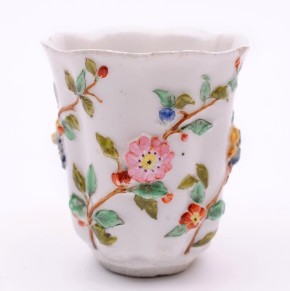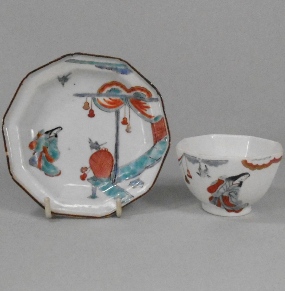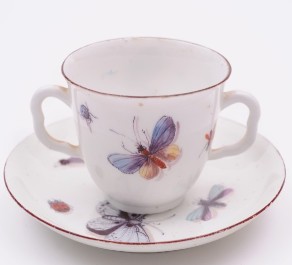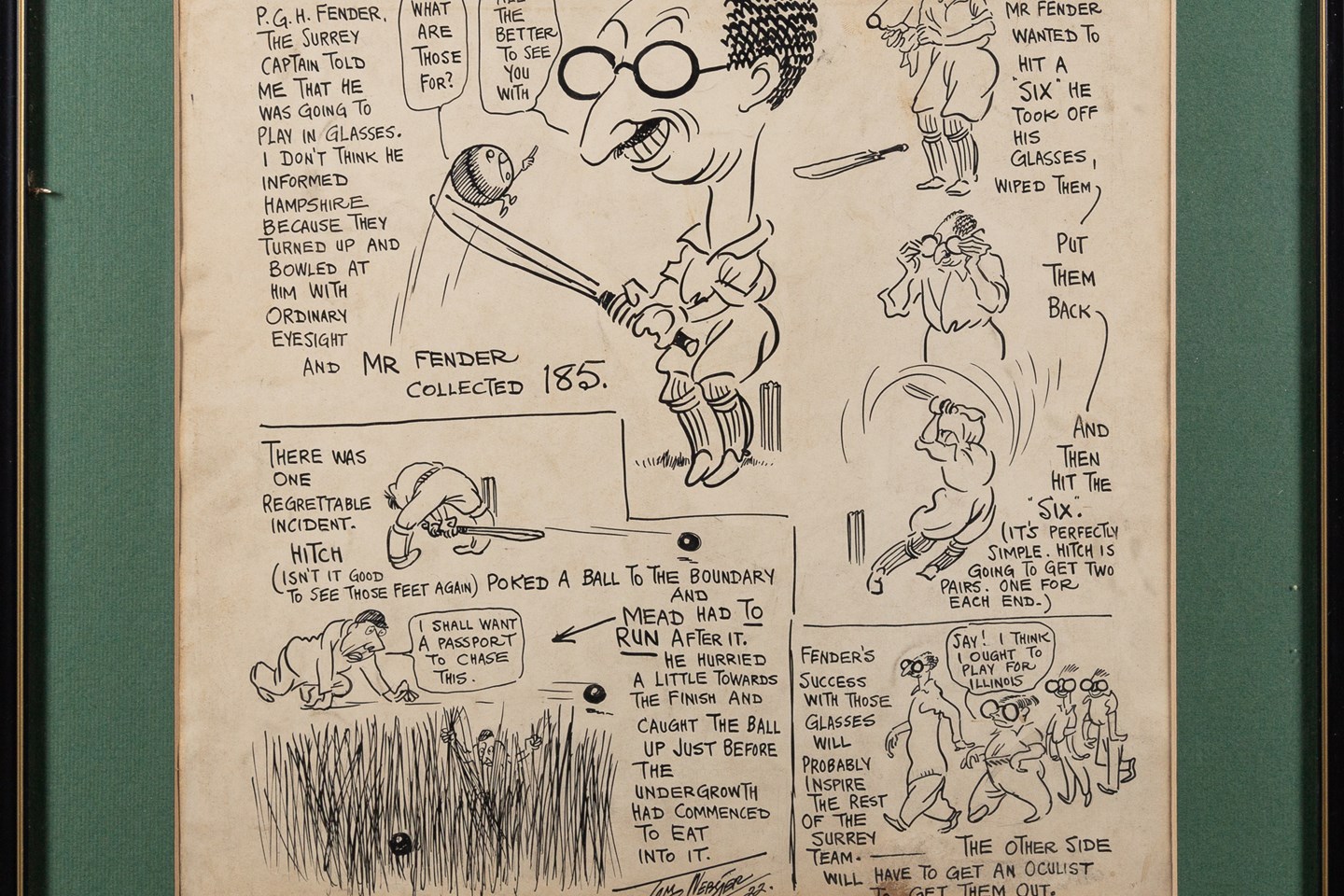It seems difficult to imagine Chelsea was once a village though less difficult to imagine as the place for the ‘movers and shakers’ of the 18th century to live in, semi rural, cheek by jowl with market gardens and of course the Chelsea Hospital. Little wonder then that Nicholas Spirmont chose it as the site for a porcelain factory. Though I wonder what the well heeled inhabitants felt about a dirty, smoke producing manufactory on their doorstep even if it was the most aristocratic of porcelains.

A Chelsea porcelain Teaplant beaker circa 1745-50 (FS17/58)
Spirmont was originally a silversmith and pieces bearing his London marks date 1743-47 there seems to be little doubt that porcelain production coincided, in part, with these dates and unsurprising that his earliest porcelain (amongst them crayfish table salts) were based on silver prototypes.

A Chelsea Lady in a Pavillion pattern teabowl circa 1752 and an earlier and similar Japanese saucer (FS17/60)
Chelsea, like others, favoured the Kakiemon palette, but it also made direct copies of Japanese prototypes, though also pioneered more novel decoration, perhaps the earliest example being tea plant beakers. Perhaps it was the proximity of Hans Sloane’s Physick Garden that was the reason that insects, butterflies and a host of domestic flora and fauna inspired the Chelsea porcelain decorators.

A Chelsea porcelain 'red anchor' cup and saucer with butterfly, insect and bird decoration circa 1755 (FS17/56)







